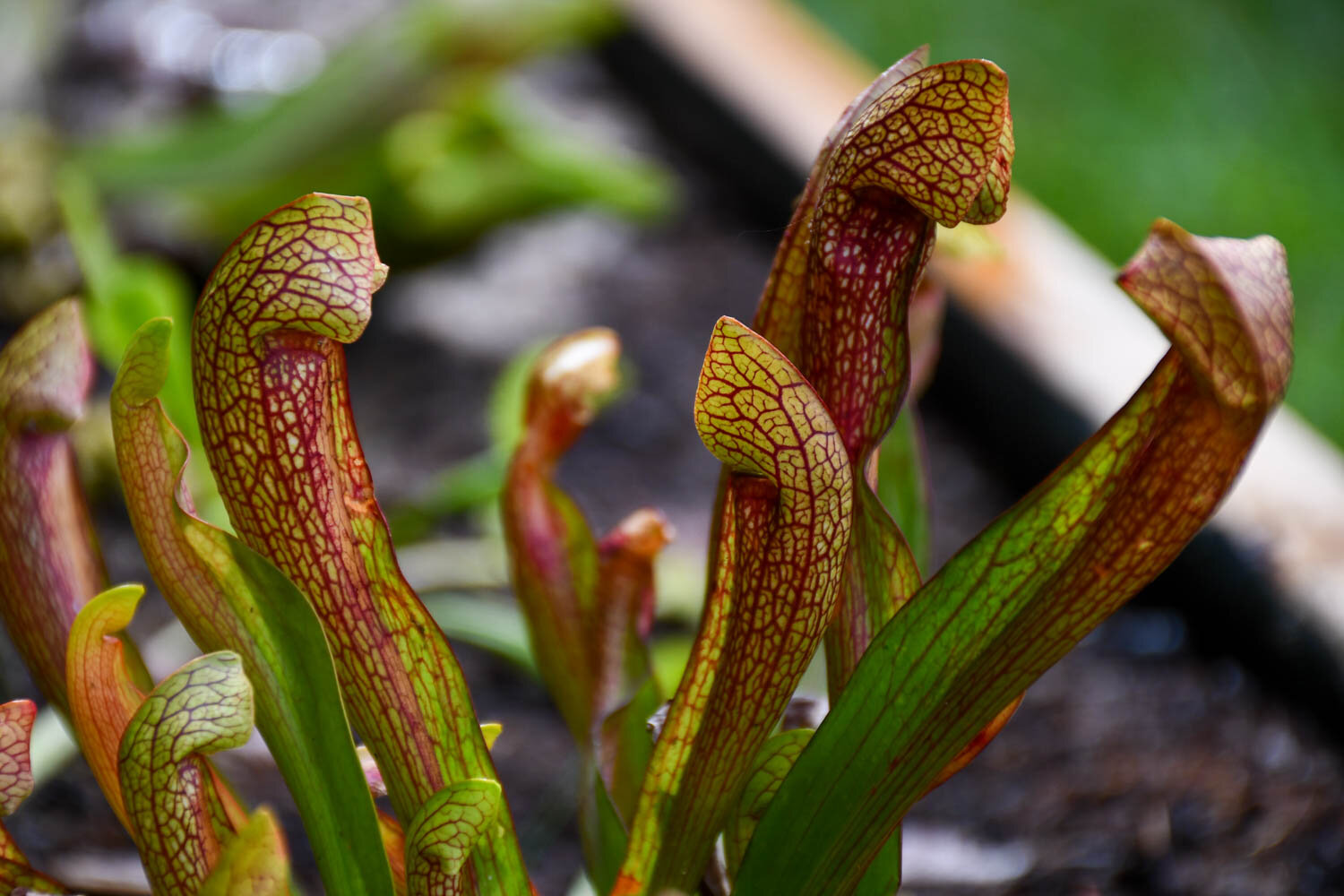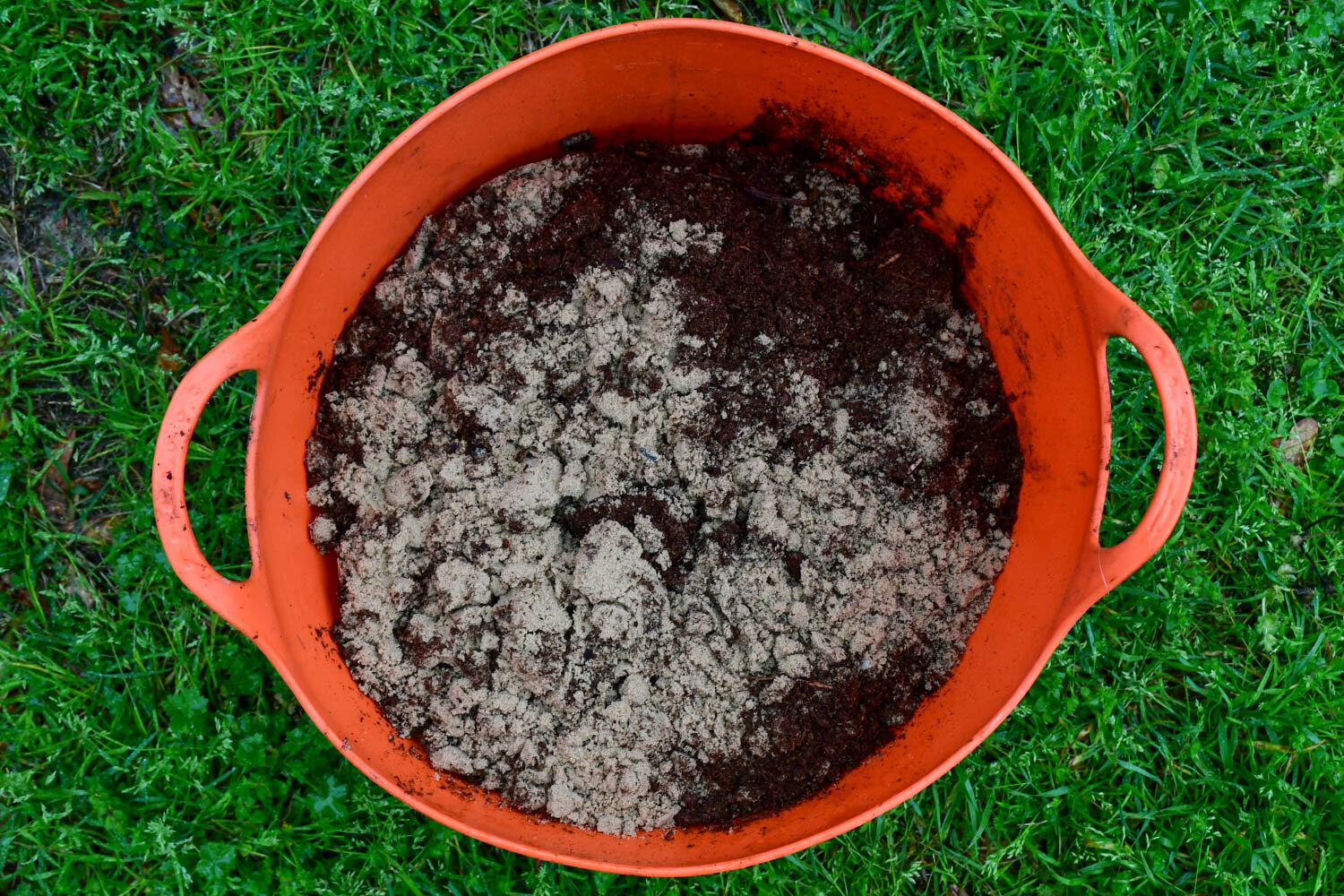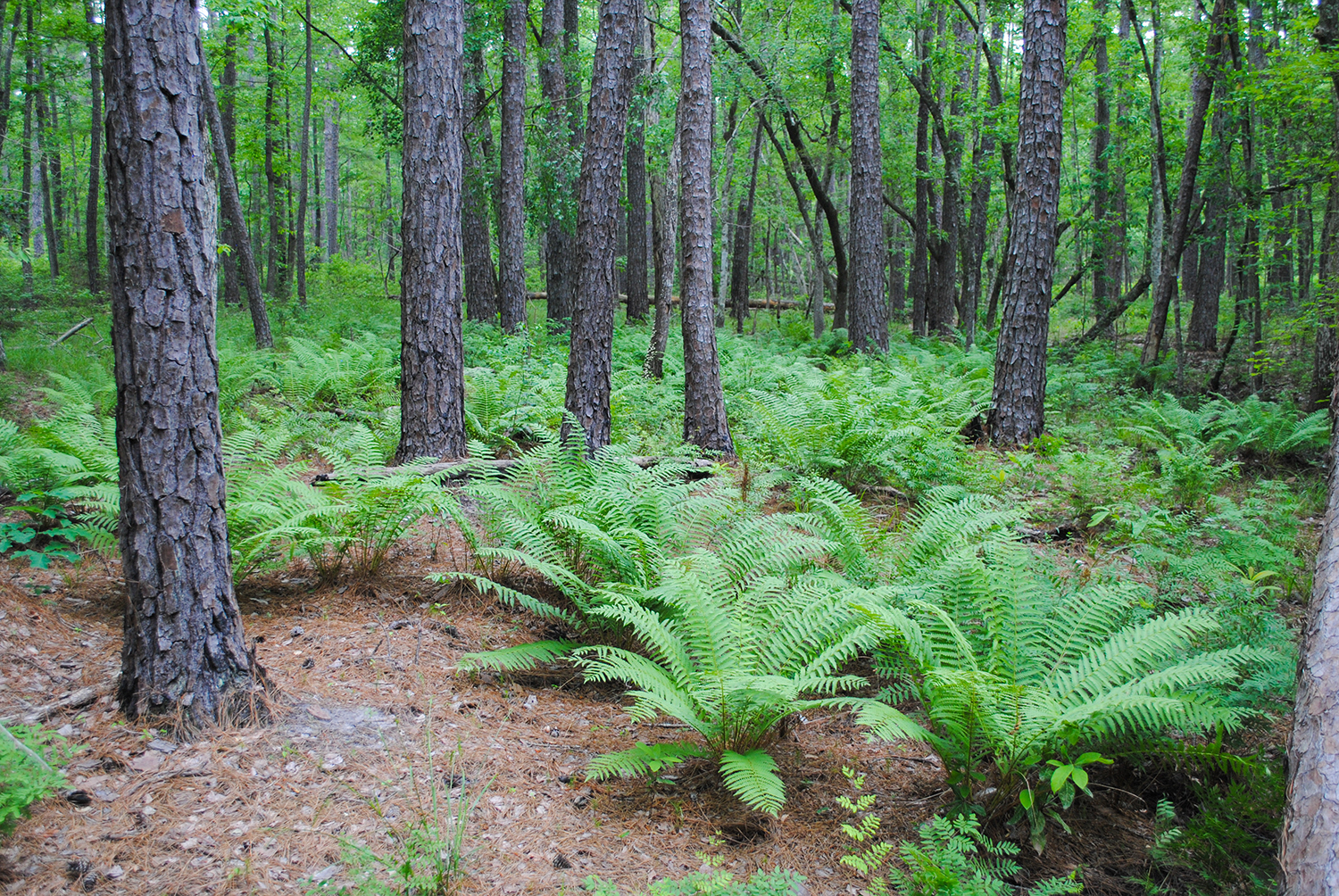As I’ve written before, I’ve been bitten by the carnivorous plant bug since moving to Texas. Thanks to Jevon, one of my students, I feel like I’ve finally gotten a grasp on how to grow them. For the past couple of years, I’ve had them growing in containers in shallows tubs of water, which has been nice, but a pain in some ways due to having to monitor the water levels. This summer, I’ve wanted to create something more permanent for them. Thus, I went the route of building a carnivorous plant bog.
I talked to Jevon prior to building it for some advice. The bog is approximately 3 × 8 ft, and 12 inches high. Jevon gave me the advice to not make the bog too wide or you can’t cultivate the middle very easily since the soil inside is very spongy. One step in and my foot would sink. Another consideration was to site it above the ground or in the ground. I decided to build the bog above ground because 1) it would be much easier, and 2) nearby trees might mean I would damage roots.
The bog box is built!
After I made the box and leveled it on the site, I got a 7 × 10 ft pond liner sheet and lined the box. I found that since the liner was folded up into a 1 x 1 ft sheet in the package, it made it really easy to visualize a grid over the box and make sure that I had it on right. I will say that if I had to do it again, I would try to pull it so that one edge lines up with the box edge so that I can try to salvage some of the sheet for other projects. I then fitted the liner to the box and crimped it down in the corners.
Here you can see the 1 × 1 ft grid in the liner.
The liner is now fitted to the box.
After that, I began to mix my sand and peat moss mixture. I ended up doing a 40% sand : 60% peat moss mixture. Most resources recommend a 50/50 mix, but to try to reduce the number of sand bags I bought, I went with my ratio. The sand bags were 0.5 cu ft and the peat moss was 3 cu ft, so I did sixteen bags of sand to four bags of peat. I then mixed them in the bed of my truck
I mixed the sand and peat moss in the back of my truck. You can see them separate here…
…and blended together here. I tried to break up the clumps of peat as I went along.
I then started filling the bog with the substrate and watered it with every wheelbarrow load. Peat moss is very hydrophobic and hard to wet; therefore, I didn’t want to wait until the end to try to moisten it all.
Filling the bog with substrate and watering it in
When I got to the height where I was about the height of a gallon pot rootball away from the top, I stopped and I placed my carnivorous plants out how I wanted. That way to plant them I would save excavating the substrate, and I could just place it around the plants. Even though this bog bed is going to be for propagating and breeding plants, I decided to do a somewhat random planting with taller forms to the side and back and shorter ones to the front center of the bed.
The pots are placed! If you look closely, you might see a few other species like Lilium iridollae mixed in with the carnivorous plants.
Once I had them where I wanted, it was planting time. I had topped my pots with live Sphagnum to help reduce weed growth in the pots, and with it flourishing, I had to rip some off the edges to be able to plant my carnivorous plants. I saved this moss till the end to top the substrate in the bog.
I removed the gallon pots. One thing I’ll note here is that some of the carnivorous plants didn’t have roots all the way to the bottom of the pot, and that soil just fell out. I think that is due to the fact that I keep them in shallow trays of water for growing up to this point. And, while I tried to make sure they were never very deep in water, the water levels would shift over the growing season. My guess is the roots grew to the water table and stopped there. That is part of the reason I wanted to create this garden so that the plants have more root space to grow. In the future if I have to have some in these shallow pools of water, I will make sure I let them dry out more between waterings.
Once all of them were out of their pots, in place, and I did a quick design check by imagining what they’d look like when grown, I filled in around them with the substrate while double checking that the rhizomes and buds were at least at the level of the top of the bog so that they didn’t get buried. I then went back between the plants and plugged the live Sphagnum so that it can begin to grow and cover the ground.
I decided to let the bog settle for a couple of days before I trimmed the liner to the wood edge. I didn’t want to cut it and then the liner fall too far below the box lip with substrate settling and water accumulation. I watered everything in well, and then lightly watered over the next week. On watering, I’ll note that our water here is pretty pure with not a lot of carbonates or nutrients in it. It’s what I’ve been using on them for the past two years, and I haven't seen any major issues with it.
The bog finished and thriving! I’m so pleased with how it turned out!
Just after I planted the bog, we got an inch of rainfall which was glorious. Some high wind knocked some pitchers over. The first time that ever happened, I was crushed, but growing these I’ve learned not to fret because they will be pushing new pitchers soon. Plus, you can then cut them off and use them in beautiful flower arrangements. Yet another amazing application of these amazing plants.
Should Sarracenia ever blow over, they make great cut flowers for bouquets!
It’s now been a few weeks, and my bog garden is thriving. Mind you, I planted them on one of the hottest days of the year, and I’m thrilled the plants are doing well. Most plants are settling into their new home and putting on new shoots. I can’t wait to see what all surprises my bog garden has in store.
A close up of Sarracenia × ‘Dixie Lace’ showing the incredible venation possible on pitcher plants. Notice the new shoots near the base, which indicates it likes its new bog home.


























